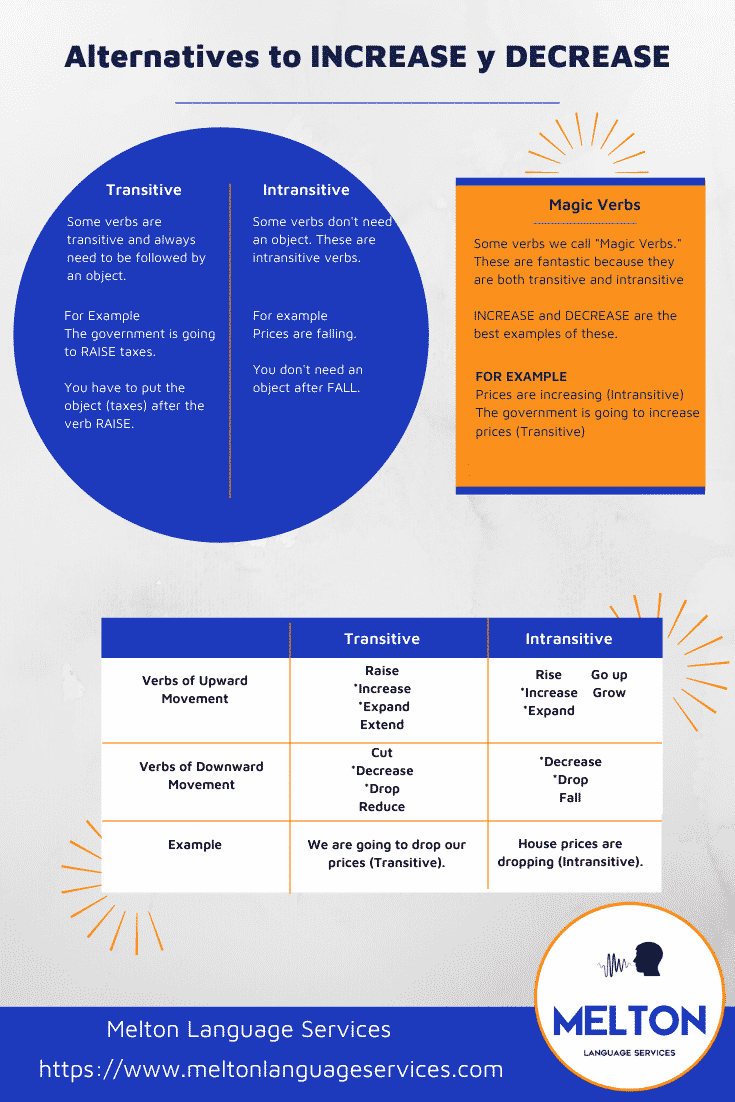In a previous post we looked at DESCRIBING GRAPHS AND TABLES IN ENGLISH, which is a good way to add information to sentences using adverbs and adjectives.
Today we want to give you some alternatives to increase and decrease for verbs.
Increase and decrease are fantastic, and of course you can use them. However, the problem is that non- native speakers ONLY use these 2 verbs. So what are some alternatives and how can we use them in sentences?
As we saw in the previous POST, the first thing we have to consider is whether a verb is transitive or intransitive.

There are of course more verbs you can use, and we will look at them in later posts, but for now, this should give you some alternatives to using Increase and decrease.
Top Preposition Tips
- When we use a verb followed by a percentage, the preposition is nearly always BY, i.e. Profits fell BY 20% last year. The government is going to raise taxes BY 5%.
- When you use a verb followed by a number or figure the preposition is normally TO, i.e. The average house price in Madrid has fallen TO 180.000 Euros. Next month, the cost of a metro ticket is going to rise TO 1.5 Euros.
2 Comments
Contact Us About Your Language Training Needs
About
At Melton Language Services, we provide professional English training to ministries and companies that need fast results with specific needs. Our dynamic methodology gives companies the tools they need to ensure their employees have the professional skills they need to be effective. Individual or group, private or public sector. We provide the service you need and deserve.


In the chart for transitive and intransitive verbs, aren’t the words ‘upwards’ and ‘downwards’ crossed?
You’re right, Pablo! Good catch. I’ve changed it above. Thanks!